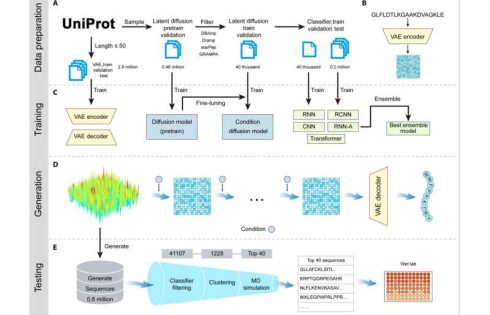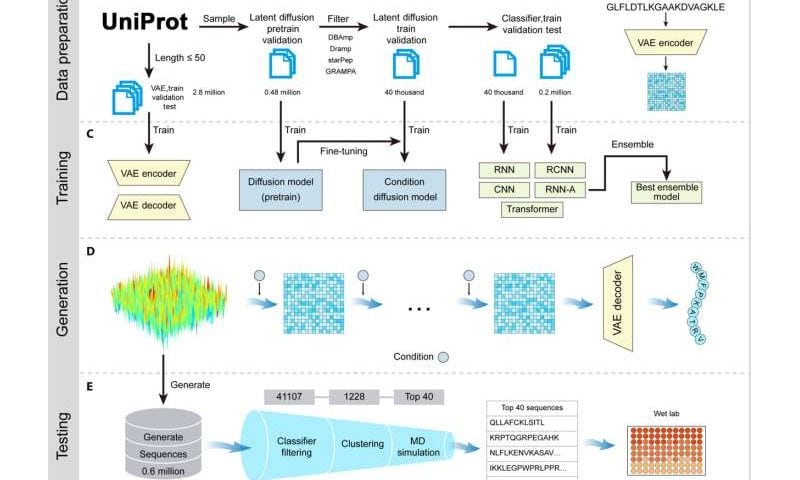
A team of microbiologists, chemists and pharmaceutical specialists at Shandong University, Guangzhou Medical University, Second Military Medical University and Qingdao University, all in China, has developed an AI model that generates antimicrobial peptide structures for screening against treatment-resistant microbes.
In their study published in the journal Science Advances, the group developed a compression method to reduce the number of elements needed in training data for an AI system, which helped to reduce diversification issues with current AI models.
Prior research has suggested that drug-resistant microbes are one of the most pressing problems in medical science. Researchers around the world have been looking for new ways to treat people infected with such microbes—one approach involves developing antimicrobial peptides, which work by targeting bacterial membranes.
Unfortunately, developing or finding peptides has proven to be too slow to address the crisis. So researchers have turned to AI-based approaches to aid in finding such peptides. But that approach has encountered problems, as well, the biggest being the lack of a large training base, which leads to peptide discovery that lacks diversity.
In this new study, the researchers in China found a way around this problem by developing a compression technique that reduces the number of elements needed to train their AI system.
The researchers call their system a two-stage AI pipeline leverage diffusion model. The first stage works by compressing data describing 2.8 million known peptides into a numerical form by amplifying signal noise randomly. The second stage then pulls new peptides from the simplified data, removes the noise, and decompresses the data used to describe its peptide sequence.
In testing their new system, the research team found that it was able to filter peptides listed in a training database down to a reasonable number of those most likely to have antimicrobial properties. In looking at 600,000 of them, the team experimentally tested 40 peptides and found 25 that showed promise in combating bacterial and fungal pathogens.

